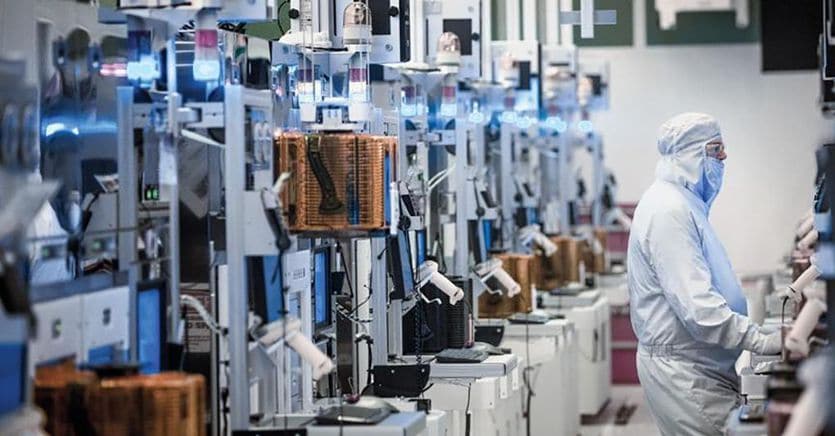An industrial project worth almost 11 billion is played out on the thin thread of economic diplomacy, potentially one of the largest operations with foreign capital in recent years. It is the Intel dossier, launched by the Draghi government with the former minister of technological innovation Vittorio Colao and finished under the direction of Adolfo Urso, minister of companies and made in Italy of the Meloni government. After an initial signing of a letter of intent with an obligation of confidentiality, the change of executive led to a phase of impasse while the two regions remaining in the running to host the investment, Veneto and Piedmont, continued to launch signs of availability to the American multinational.
The Intel investment
In March, Intel announced a potential investment in Italy of up to 4.5 billion for a plant dedicated to the back-end phase (micro-assembly) of the chip manufacturing process, with an estimated 1,500 direct jobs and 3,500 in related industries. In reality, according to what was reported by various government sources (while Intel does not comment on these aspects), the operation would have subsequently been redefined upwards: it could be scalable over time to reach around 11 billion, of which more or less 7 in capex (investments) and 4 of opex (operating expenditure). The point is that for several weeks the contacts between the multinational and the government, which must guarantee public funding and regulatory facilities, were interrupted or at least weakened. Two weeks ago, Intel’s position, reported by a spokesman, was “we are waiting to resume working with the new government”. Asked for an update, Intel confirmed that “our plan to invest in the European Union is continuing” adding that “we will resume working with the new Italian government”.
First contacts with the new government
Initial contacts would have been re-established, even if the path remains quite complex, there are still technical times to consider and there are still ongoing assessments by Intel on the industrial profile of the operation to be carried out in Italy in terms of organization with the maxi-investment from 17 billion programmed in Germany. There is also the public contribution to be defined which in the best hypothesis should cover 40% of the capex part, therefore between 2.5 and 3 billion, between the state and regional share. Minister Urso explained that the State is ready to participate with its own resources which, however, vary according to the contribution that will arrive from the chosen Region and that «the choice of the site of the plant (according to what has been leaked, Veneto would still have an advantage over Piedmont in the second row, ed) is up to the company on the basis of the conditions it deems most appropriate».
Public support and aspects still to be defined
However, at least one new provision is needed on public funding. In March, with the energy decree, a fund of 4.15 billion was created until 2030 for the development of microprocessors, also through the establishment of new plants in the national territory, but a Dpcm is missing to make it operational (it had to be issued by the beginning of April) which defines areas of application, criteria and methods for allocating resources. However, in consideration of the lengthening of the times, the original scan, which envisaged using already 150 million for 2022 and 500 million for 2023, may now have to be remodulated. In the interlocutions with the Draghi government, after an initial lengthening of the times, the beginning of December was assumed for the conclusion of the negotiations. But the final goal, if all the open points are resolved, could still be postponed by a few months.
The attempt to curb the bureaucracy
In terms of bureaucracy, on the other hand, the government has prepared a useful framework with article 32 of the Aiuti bis decree which provides for the creation of “areas of national strategic interest” for the realization of large-scale investments in relevant sectors including the “microelectronics and semiconductor” supply chain. The establishment of these areas is equivalent to a declaration of non-deferability and urgency of the necessary works, also for the purposes of expropriation for public utility. But even in this case an implementation Dpcm will be needed.
